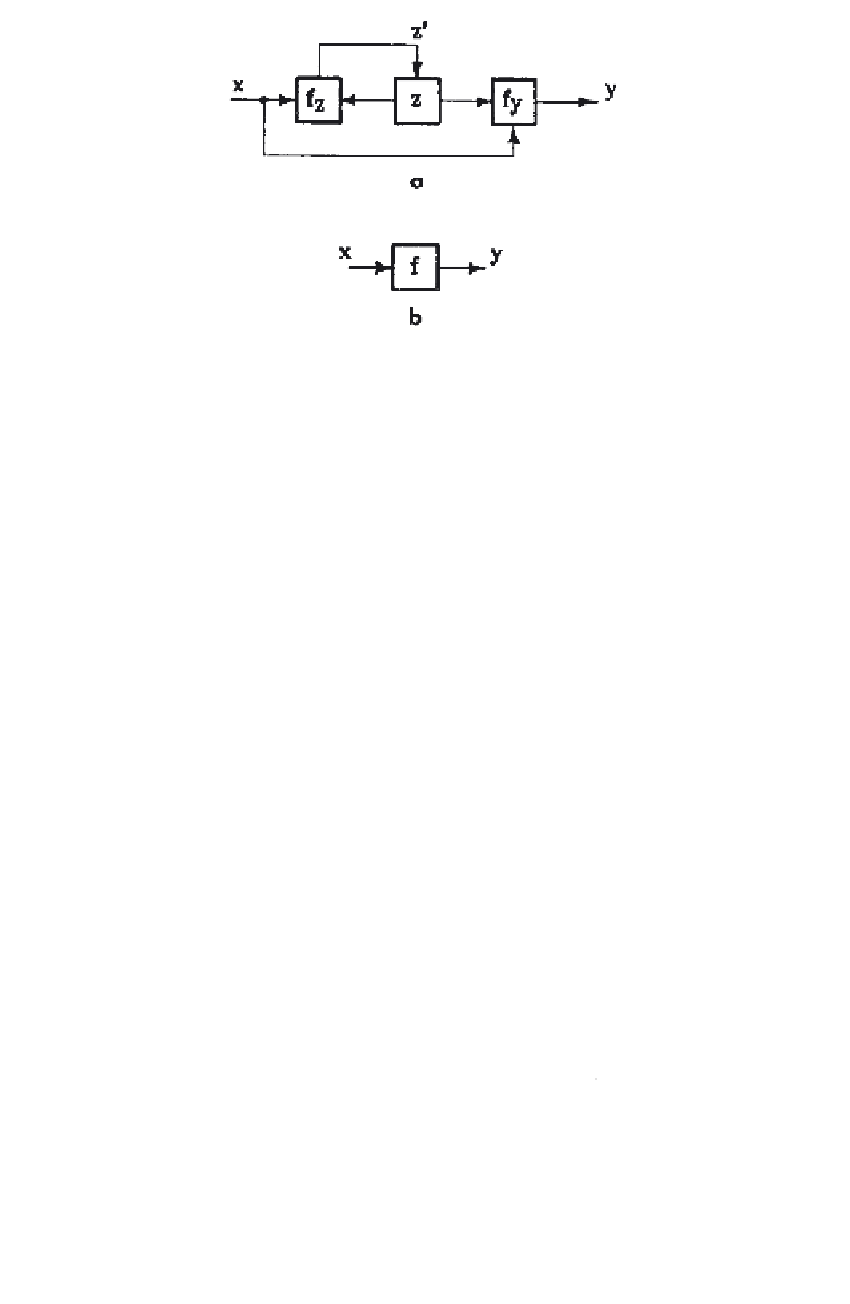Information Technology Reference
In-Depth Information
FIGURE 3. Signal flow in a finite state machine (a); input-output relation in a trivial
machine (b).
z
¢=
z
=
z
0
= constant
(10a)
yfx
=
(
, constant
)
=
()
fx
(10b)
In other words, a trivial machine is one which couples deterministically a
particular input state with a specific output state or, in the language of naive
reflexologists, a particular stimulus with a specific response.
Since the concept of “internal states” is crucial in appreciating the dif-
ference between a trivial and a nontrivial machine, we shall now give
various formal interpretations of these states to lift them from the limbo of
“being not further analyzable.”
First, it may appear that by an artifice one can get rid of these mysteri-
ous states by defining the driving function
f
y
in a recursive form. However,
as we shall see shortly, these states reappear in just another form.
Consider the driving function [Eq. (8)] at time
t
and one step later
(
t
+D):
yfxz
yf
=
(
,
,
)
y
(
)
¢=
xz
¢ ¢
(8¢)
y
and assume there exists an “inverse function” to
f
y
:
z
=
(
f
x y
,
)
(11)
We now enter the state function [Eq. (9b)] for
z
¢ into Eq. (8¢) and replace
z
by Eq. (11):
(
(
(
)
)
=
()
(
)
yf
¢=
xf
¢
,
x xy Fxxy
,
f
,
1
¢
,
,
(12)
y
z
y
y
or alternately and equivalently
()
1
(
)
yF xxy
y
=
,*, *
(13)


Search WWH ::

Custom Search